Village of the damned: Inside the Fox Street fire
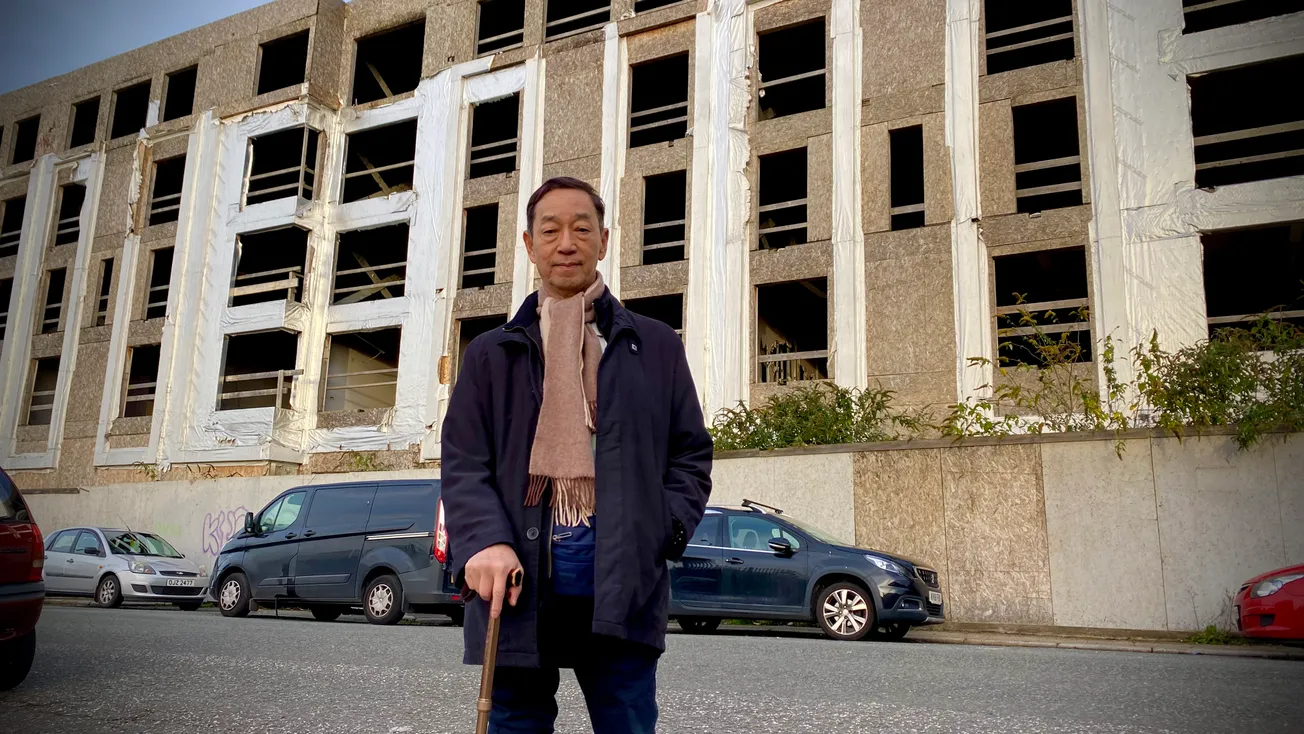
Special investigation: For years, Matt O'Donoghue was told about major problems at a controversial development in Everton. Then the dire predictions came true
By Matt O’Donoghue
“Block D is an inferno right now”, the first message reads. “Look what’s been torched.” More follow. “Not sure how other blocks are faring, they’ve been evacuated.” Some have video or photos attached. “Seen this. I feel sick.” One simply reads: “Fox Street’s final chapter.”
Block D at the stalled residential development of Fox Street Village sits on the edge of Everton. It is ablaze, and a lot of people want me to know. As the firefighters battle to hold back the flames that threaten to leap from block to block, frantic calls, dramatic videos, and heartbreaking messages light up my phone screen. Many of those getting in touch are people I met over the past five years I’ve been reporting on the sorry saga of Fox Street Village. They’re all saying the same thing: “It was only a matter of time.”

“Something like this had to happen,” says Chris Burridge, who owns one of the Fox Street Village apartments as he surveys the damage. It’s Sunday, January 28th and the day after the fire. Steel girders are bent and buckled like roller coaster tracks; the metal cools and creaks, and loose material flaps in the wind. “There’s been no decent perimeter fence for some time, even though we’ve been reporting incidents. We were lucky Block B didn’t go up. The flames and heat were ferocious. Mersey Fire saved those buildings.”
Lucky indeed. Fox Street Village was originally intended to be a 400 apartment complex spread across four blocks that were to be four or five stories tall. But Block D was never completed and has remained an unfinished shell for the past five years. The rest of the site, on the other hand, is home to a number of residents. Had the fire spread there, it would have been catastrophic. Letting agents are on-site to support tenants and help with the clean up, while insurance brokers and risk assessors mill about around them. Lifts, heating, and water are soon back on. Black debris litters the ground and the flat roofs of the adjacent blocks, while clumps of burnt insulation and wood continue to drift from above.
A team from Residence 365, the company that manages the Village’s interior communal areas, is helping to get residents back into their homes. “Unfortunately, as the fire started to take hold, many residents in Block A failed to evacuate,” says Carolyn Delaney, Residence 365’s managing director. “Police had to force their way into every apartment to make sure that building was clear and everyone was safe. Those doors and frames will have to be repaired.”
Outside, Block B’s walls and windows are warped from where it faced the fire. The cladding is buckled and wavy, like bad icing on an overbaked cake. Most of the glass is cracked and broken, and window frames have bowed out of shape. The fire breaks under the cladding will have activated and expanded. There will need to be a lot of work to put things right.
“The grounds and estate management company are nowhere”, says an exasperated Burridge. The last he was told, a company called Xenia Estates Limited were responsible for looking after the outside areas. “It’s outrageous. They’ve sent nobody down here to help or make things safe.”
Kevin Robertson-Hale is a local campaigner who set up the action group Everton Together. He was shopping at the ASDA on the Breck Road when he first saw the black clouds rising above his community. He knew straight away what was likely to be burning. “It’s just a miracle that nobody’s been hurt,” he says. Although Block D was not a finished building, homeless people have been sleeping there and using it as a shelter. “The way the place went up, someone asleep would never have got out.” Kevin is horrified by what has happened, but certainly not surprised. “We’ve been saying for years that something was going to happen. Either someone was going to fall off and break their neck, or it was going to go up in flames.”
Beneath the debris and behind the spectacular videos, the plumes of smoke billowing out and up from the bare bones of blazing Block D, are hundreds of stories of loss and despair. To properly understand what went wrong at Fox Street Village, to learn why things must be fixed, we have to understand why they were broken in the first place.
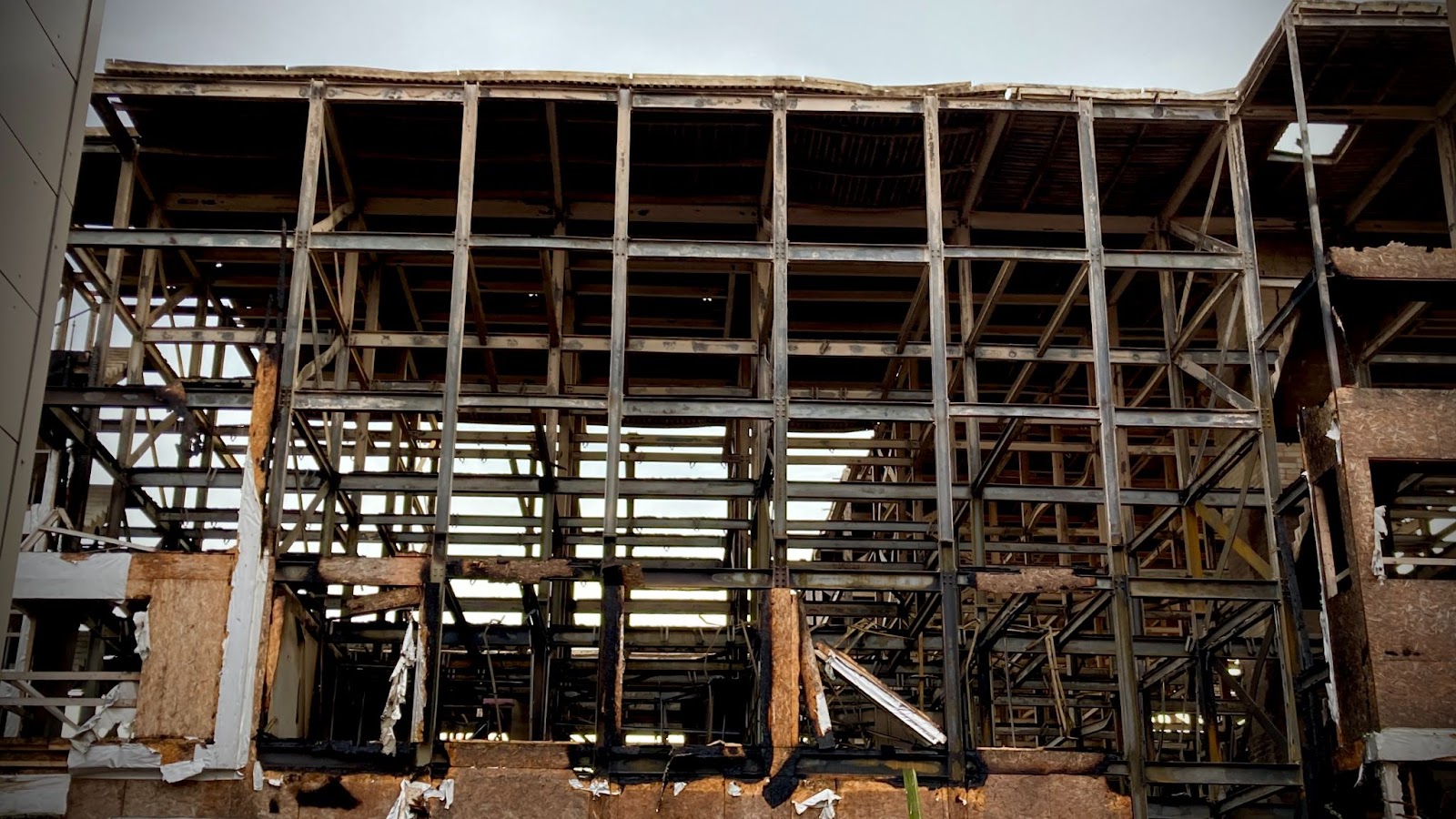
Between 1971 and 1991, Everton’s population dropped by 60% as the area’s fortunes and prospects charted exactly the decline of the British Empire. As Liverpool’s docks fell silent, the huge warehouses and the factories like Tate and Lyle and British American Tobacco were closed. Thousands of jobs disappeared and the communities that once relied upon those goods shipped from all corners of the Empire ceased to exist. An urgent need to improve the area’s housing conditions, the crumbling Victorian tenements, led to slum clearance and demolition on a massive scale. Those once solid communities were broken up with families moved out and housed in places like Kirby, Runcorn and Skelmersdale. It was the perfect storm; shops closed, tower blocks were pulled down and the city’s terminal decline was hastened by Margaret Thatcher’s vicious attempts to starve the upstart council controlled by Hatton’s Militant Tendency into surrender.
Stand on the edge of Fox Street today and look towards the gleaming glass skyscrapers and modern penthouses and it’s obvious, the regeneration that has breathed new life into other parts of Liverpool in recent years seems to run out of steam as it creeps towards this area’s streets. According to the last census, Everton West — where Fox Street Village sits — has the third highest numbers of children on free school meals. This neighbourhood has some of the poorest health indicators, including the lowest life expectancy, across the whole of the city.
As Liverpool’s reputation grew as a great place to study, the last decade has seen residential housing for the influx of students become the city’s short-term planning solution and a way to kickstart Everton’s economy.
Fox Street Village followed the same controversial funding model that has dogged similar schemes across the city, known as ‘fractional sales’. Buyers — many based overseas — are enticed with the promise of a good rent and a solid investment in return for paying a large part of the sale price upfront. But as countless investors at other stalled sites in Liverpool have discovered to their detriment, there’s little or no protection should things go wrong.
When Fox Street Village Limited collapsed into administration, in 2019, it owed creditors £10 million and the city council nearly £700,000. The council told us that an invoice for over half a million pounds remains unpaid but that the building’s new owners will have to pick up that tab. Meanwhile, £6 million that investors had paid out for Block D was instead spent on a new fifth building the developers had added to their scheme. A search of records show creditors who had paid for apartments in Block D came from Birkenhead to Beijing and all points in between. With no money left to complete the job, and no cash to settle their bills, the steel frame and internal walls made of wood have remained open to the elements. The freehold to the site was sold to Manchester-based property investment company SGL1 Limited in 2020 for a reported £1.6 million. The site was split and a separate company run by the same two directors as SGL1 but called SGL3, took over the unfinished Block D. A series of complex court cases followed as buyers battled to gain control and finish the scheme. By 2021, the architect’s original drawings for Block D had been rebranded as “Park View” to be marketed at a new group of buyers. A one bed studio in the unfinished wood and steel shell was being advertised for £85,000. The Post is unsure how many people bought into this new scheme or whether their money is protected.
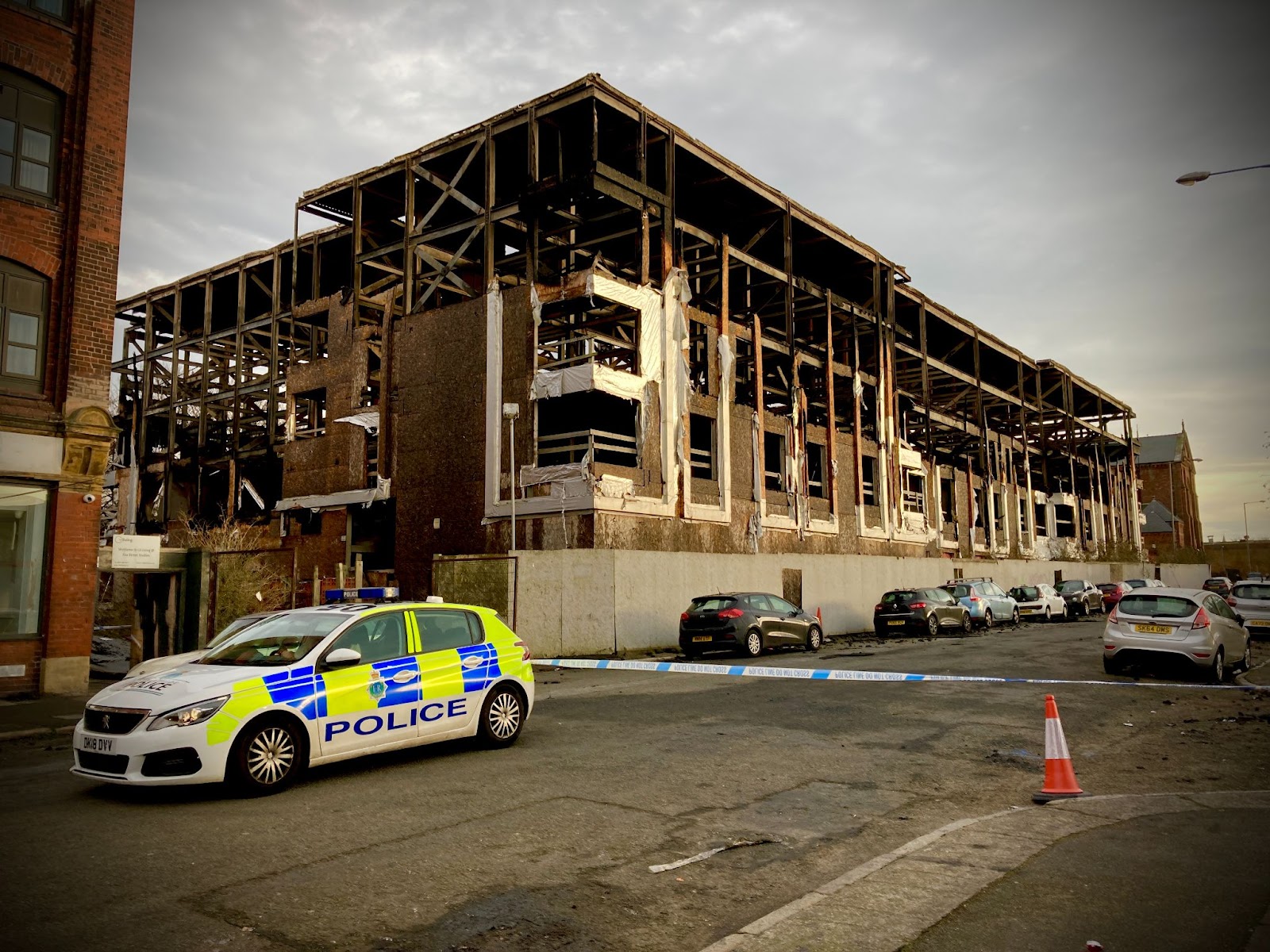
“I bought a three-bedroom apartment that cost £135,000, which was a really good deal. With hindsight, almost too good to be true. I’ve been firefighting one problem after another since day one.” November 8th, 2023 and I am rattling along the M62 with Chris Burridge. “It doesn’t look that good,” Chris says with detached stoicism and monumental understatement as Fox Street Village Block D comes into view. “It would be funny, if it wasn’t so costly and dangerous.” Chris is one of the apartment owners who have been battling over an £80,000 bill to install a transformer that would safely reconnect their electricity to the grid. The builders left a hot-wired connection into the mains, which Chris says the buyers only found out about after they’d secured the right to manage some of the site. It was just the latest in a long line of hidden surprises that have revealed themselves over the five years since tenants moved in. “The biggest block, Block D, is just a shell that should have been finished years ago,” Chris tells me as we pull up alongside what looks like a building entirely made of wood and wrapped in tin foil. “There should have been one large, shared entrance area, an underground car park for 170 vehicles, shops, a cinema room with communal laundry, and a bike store. All of those amenities were what made this site so attractive.”
Chris pauses to re-imagine what could have been, before reality kicks back in. “None of that exists. What we’ve actually got are great apartments next to the rat-infested fire trap of a mess that is Block D.”
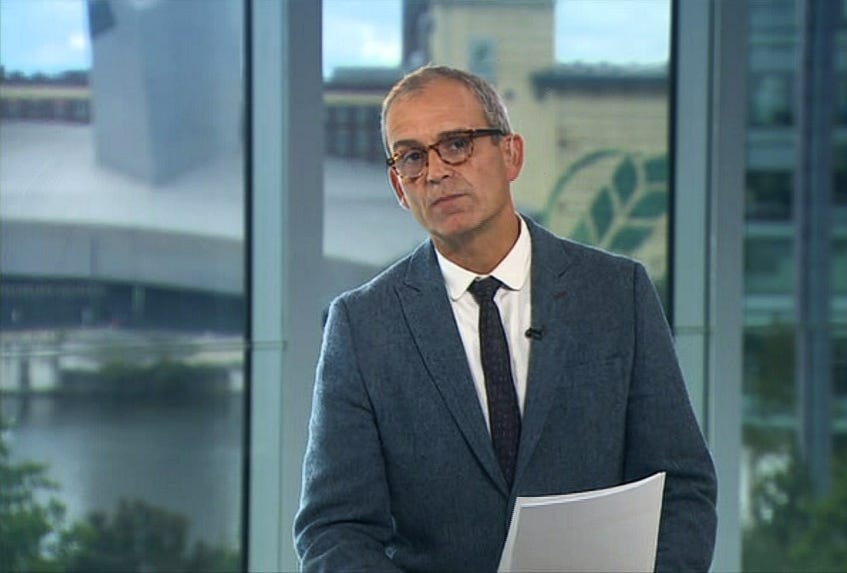
Residents in this area have been complaining to me about the rats for as long as I’ve been investigating Fox Street Village. Back in April 2019, I broke my first story on the slow-motion car crash that has taken place here — months of work as part of an ongoing investigation for ITV’s Granada Reports. Back then, tenant Ross Lowey told me on camera: “We don’t feel safe. Every time we come back round that corner, we expect to see flames coming out of it.” He was far from alone in his unhappy prophecy.
Six months before that first ITV News report, in November 2018, I had been on a separate investigation into how developers duck out of paying the millions they owed to their cash-strapped council. It suddenly took an unexpected twist. While I ploughed through a mountain of conflicting planning documents that link to this case, a buyer tipped me off that their building was about to be the first on Merseyside to be shut down and issued with a Prohibition Notice. It was the last-ditch resort for a city council that had run out of ideas on how to make this site safe. “Serious construction issues will contribute to the spread of fire,” the Prohibition Notice reads. “Fire will spread quickly and possibly unnoticed.”
Put simply, the problems that the buyers had uncovered at their completed flats were so severe that they put lives at risk. While Block D remained unfinished, three of the four blocks that people had already moved into were so dangerous that everyone would be forced to move out — immediately. Judge Lloyd would later brand the project “disgraceful” as she fined the developers £3,120 for breaching planning conditions. She expressed sympathy for the residents and investors who had been affected. Planning inspectors said the development was “poorly finished” and failed to meet standards. Those problems have cost hundreds of thousands of pounds to put right.
The council say that it was only after the buildings were largely constructed that it became apparent there was a failure to comply with conditions or the plans that had been passed. When the new owners submitted another application to make up for the missing car park, a fresh deal was struck for them to pay towards a cycle route and parking scheme. But planning approval was refused when no money was forthcoming.
Two companies were involved in the development of Fox Street Village: Linmari Construction Limited and Fox Street Village Limited. Both were run by company director, Gary Howard. In 2013, Howard was left as the sole director of Fox Street Student Halls Limited after his business partner, Lee Carroll, was forced to step down. Carroll had been found guilty of being a gang master under legislation brought in to tackle labour exploitation after an investigation into a recruitment company that Carroll ran with John Howard. Carroll was banned from being a company director for 12 years.
While nothing should be inferred from Gary Howard’s previous business history, six companies where he was a director and shareholder have a County Court Judgement against them. Just like Fox Street Village Limited, seven firms that Howard also once helped run have gone into administration owing money to creditors — two of which were also residential developments in Liverpool designed for student living. We’ve been unable to contact Mr Howard for a comment.
“The frameworks that are supposed to deliver safe buildings, protect their owners and keep those inside safe are not up to the job,” says Dr Len Gibbs, whose doctoral thesis focused on the problems with unfinished developments in the Liverpool area.
That regulatory framework — to get a building through from an architect’s drawings to the point of being occupied — can be roughly broken down into two stages: planning and building control. The first part is strictly controlled by rules and regulations that must be met and followed to the letter. A council department controls the planning process, and everything has to be approved by a committee after a rigorous assessment by trained officers. Once it passes and everybody agrees that the buildings are what the council and community needs, the proposals are said to have ‘gained consent’.
When developers have their planning consent, a building control team comes on board to oversee every step of the construction. Site inspectors visit to approve stages such as the foundations and drains, and the relevant paperwork is filed with the city council to confirm everything has progressed according to the plans that were submitted and in accordance with the required regulations. In theory, these two functions operate independently but in support of one another to deliver a building that doesn’t kill the people who move in.
That’s something of a simplification, but these are incredibly complex areas that require years of training to properly understand. Only when every step has been followed can a completion certificate be issued against the building and each individual apartment. These final pieces of paper confirm that everything is up to standard and legally ready for tenants to move in. If all these steps are followed correctly, then a development of buildings that were once judged to be a threat to the lives of residents should never be occupied. Yet they were occupied.
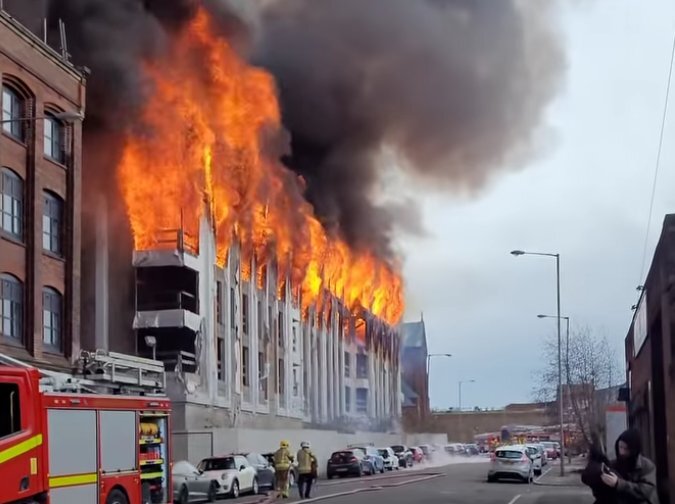
The Post asked the council whether they agreed the system appeared to have failed at Fox Street Village. They told us that they used the Housing Act to ensure the occupied buildings are safe to live in. They also say that, instead of using the city’s building control service, the previous owners chose to use a private approved inspector instead.
“Seven years after the Grenfell disaster, we still have buildings bursting into flames,” says Gibbs. “Whilst it seems that no one was injured in this case, who knows what toxins have just been released onto the city?”. Gibbs’ rigorous academic work points to numerous examples across Liverpool where weak enforcement and poor company laws that are no longer fit for purpose have been exploited to the developers’ financial advantage. “It’s the ordinary men and women who take the hit every time. Their savings are drained dry, the companies they deal with are smashed into administration, and they’re left with nowhere to turn. This needs to stop. It’s an utter disgrace and it continues to drag Liverpool’s name through the mud.”
His thesis proposes a number of changes to improve public protection and shift the burden of risk.
But some legislation already exists, so why is it not always followed or enforced?
Issues around building control in Liverpool first came to my attention back in 2008, at a block of flats in a regeneration project on Muirhead Avenue in Tuebrook. Building control inspectors had signed off missing drains, lethal wiring, and fire-damaged timbers that made up the roof on a refurbished block as being present or removed. The problems only came to light some years after residents had moved in. In a stunning admission, campaigners finally got the answers they had been fighting for from Liverpool’s former Director of Regeneration, Nick Kavanagh. He told a council meeting that it had become impossible for his inspectors to visit every building site across the city. Instead, he told elected members, they “take developers at their word” that the work has been done to regulation and up to standard.
Keen followers of Liverpool City Council affairs will recognise Mr Kavanagh’s name. He was dramatically arrested in December 2019 when Merseyside Police stormed the Cunard Building. The team from Operation Aloft were investigating allegations of fraud that are still the subject of inquiries. Mr Kavanagh denies wrongdoing, but was dismissed from his post following a finding of gross misconduct unconnected to Fox Street Village. Meanwhile, the ranks within the council’s own building control department continued to wither under budget cuts delivered by austerity, as a private sector of small service providers flourished.
While the council confirmed that it wasn’t them, it’s unclear who may have taken on all the building control functions across the Fox Street Village site. The picture is complicated, but some glaring omissions were made. For example, the building’s plans included 170 spaces for an underground car park that does not exist. These were in the architect’s drawings, which were supposed to be followed to the letter, but the developer decided it would be less hassle and cheaper if they weren’t there. What inspector fails to notice a missing car park? More to the point, who issued the completion certificate? The answer to that could lie at the feet of a man who was central to another previous investigation, Stuart Robert Duffy.
Certificates of Practical Completion, to give them their proper name, can only be issued by trained and qualified professionals and, in some cases, that can include architects. Stuart Robert Duffy was a partner in the Liverpool-based architecture practice KDP. He was also the architect of choice for a number of the city’s property developers — including Prime Site Developments Limited, founded by Kerry Tomlinson. When Prime Site’s house of cards came crashing down in 2021, Tomlinson was declared bankrupt with personal liabilities of £39 million. Before that happened, a number of buyers in a student development in Stoke had contacted me to claim they believed they had been “ripped off”. Investors had paid upfront and off-plan for rooms in a huge development on the outskirts of Newcastle-under-Lyme called the Sky Building. The scheme was to be funded using the same fractional sales model as Fox Street Village. The buyers’ contracts on the Sky Building committed them to paying around 80% in stages, with the final 20% to be settled when their units were ready for students to move in. Sky was one of a number of buildings that were never delivered when Prime Site Developments tumbled into administration. Coincidentally, Prime Site Development’s Kerry Tomlinson was, at one stage, also a co-director with Gary Howard on Fox Street.
As construction on the Sky Building began to falter and the bank accounts ran dry, Stuart Duffy came to the “rescue”. At least that’s the word I heard him use when I attended his disciplinary hearing in London at the Architects’ Registration Board, before they took away his licence to practise and struck him off. At this point I could broadcast my investigation into Duffy on Granada Reports. Even though Sky Building was still a construction site, Duffy issued bogus Certificates of Practical Completion that claimed the development was finished. All the Sky Building buyers were then legally bound by their contracts to pay the rest of the money they owed for their student accommodation, but when they rocked up to Stoke to move their furniture in, they found their building was uninhabitable.
As part of my investigation, I discovered that the Sky Building wasn’t the only development where Mr Duffy had been caught issuing completion certificates on buildings that weren’t finished. His Liverpool practice, KDP, are also the architects who designed Fox Street Village, and his signature appears on at least some of the Fox Street Village completion certificates. KDP has since gone into administration. The number of legal claims against the firm's insurance mean that Fox Street’s buyers will be near the back of a very long queue. Despite responding to our initial enquiry, Mr Duffy has not replied to our questions.
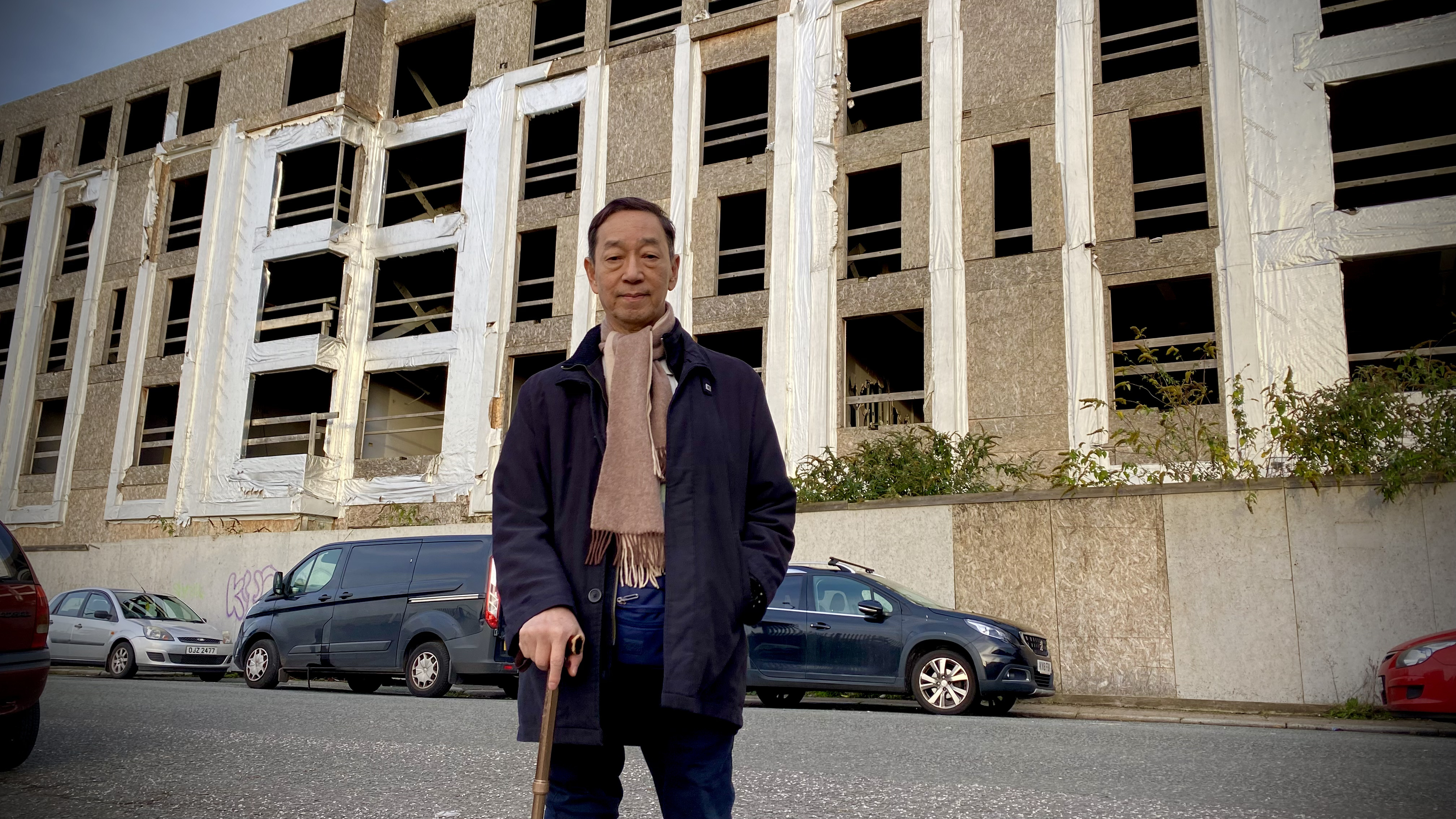
It’s November 2023, and Samuel Ip has travelled from Hong Kong to attend a High Court hearing, the latest skirmish in a long legal war that the Fox Street Buyers have found themselves fighting. They’re battling for control of the five blocks that make up the site so they can finish the residential development that has swallowed up their savings. Samuel’s agreed to meet with me and Chris Burridge on the street beside Block D. This is the third time in three years Samuel’s come to witness the continued deterioration of his block. Each time, the cost of completion climbs; it now stands at around £14 million.
Samuel is a smartly dressed, obviously educated man who speaks good English. As he walks with the aid of a cane, he fills me in on his story. “It’s been a very discouraging experience,” he says with great understatement. “I studied for my law degree in the UK and had every faith that the British system would protect my investment. That didn’t happen. Everything is broken, from the developer to the solicitors and administrators. We are the victims.”
Samuel encouraged his family and friends in Hong Kong to follow his investment lead, such was his belief in the Fox Street development. He claims the problems began when the developer spread themselves across too many projects. “They had too many kettles and not enough lids. It could have been great if the developer had only delivered what they promised.”
An icy wind whips off the Mersey as we survey the site before heading inside the old Swainbanks furniture warehouse at the centre of the Village complex. It’s a red brick Victorian period warehouse that has now been converted into 54 apartments. We walk into a large white room with windows the length of the entire warehouse that look out onto Fox Street. This ground floor space will soon be a communal lounge with desks and sofas for the residents to work at. Two women are locked in an animated discussion on the interior design possibilities presented by the bare white walls. One of them is Carolyn Delaney from Residence 365, who took over the management of the interior communal areas from Xenia Estates Limited. “There was limited CCTV and this place was full of drug dealers. We had prostitution and all sorts of criminality going on. Somebody was stabbed. It was just anti-social behaviour on a daily basis.” Chris and Samuel credit Carolyn Delaney and her team with turning Fox Street Village around. “Now the outside areas have gone back to Xenia Estates Limited on behalf of the freeholder, this has become our biggest problem.” It’s as if Carolyn can also see the danger ahead.
Documents shared with The Post show Xenia Estates Limited collected a charge off the leaseholders every month. It was down to them to spend that money in a way that kept the site safe and secure. Apartment holders believed this service charge also covered security on Block D. Xenia Estates Limited told us they were only responsible for the car parks and the refuse collection. In a statement, SGL3 — that’s the new company with control of Block D — say they’ve acted in good faith and responsibly since they took over. They claim that, while delays in their planning application have held up progress for over two and a half years, they have responded immediately to all concerns around health and safety. SGL3 refutes all allegations relating to a lack of security and says these are “completely without merit.” The council told us that negotiations with SGL3 over their new application were nearing completion when the fire broke out. These plans will now have to be reviewed in light of the condition of the remaining structure.
In their statement, SGL3 Limited say the site’s been insured since they took over three and a half years ago and: “since the fire occurred we have been in constant dialogue with the police, the fire service and Liverpool City Council. We have responded immediately to all requests relating to health and safety concerns and have ensured the site has been safe and secure.” They add that they’re “not responsible for the actions of any illegal entry to our site which results in damage and destruction to our property.”
A joint Merseyside Police and Mersey Fire Service investigation has been set up to establish how the fire started and who may have been responsible. Buildings like Block D do not spontaneously combust. Local chatter suggests that a neighbour may have seen people in balaclavas acting suspiciously on the top floors earlier in the day, before fire broke out, though this is unconfirmed. By 2.23pm, the smoke that Kevin Roberson-Hale could see was visible from miles around. Hearsay is that Merseyside Police may have a video of the group as they prepare to torch the building, though this too is not confirmed. The police have appealed for anyone who has CCTV or phone footage to get in touch.
For Kevin and many other close observers of the Fox Street Village debacle, this site stands out as the perfect example of what could go wrong elsewhere in the city. “When developers get away with doing exactly what they want to do, this is what happens,” he says.
Kevin’s observation is not hyperbole. It’s well-informed comment.
To get The Post in your inbox three times a week, join our free mailing list now, or support us and get all our members-only reporting by becoming a paying member for just £7 a month.

Comments
Latest
Liverpool’s hospitality scene is changing. So why are we reluctant to shout about it?
Breaking: Councillor Colette Goulding has been suspended
Chaos at the conference
Exclusive: How a food bank siphoned £195,000 into private hands
Village of the damned: Inside the Fox Street fire
Special investigation: For years, Matt O'Donoghue was told about major problems at a controversial development in Everton. Then the dire predictions came true